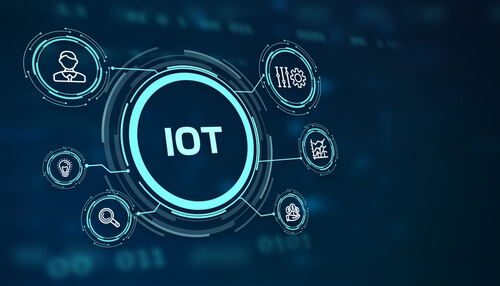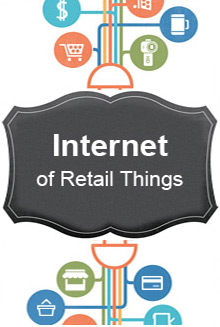While IoT has been all the rage in the past half a decade, the last couple of years have seen frenetic activity in the development of IoT platforms by almost all recognizable players. While the debate continues about which of these platforms will emerge as the first among equals, there is a very real need to tap into the massive amounts of data floating about in an ocean of connected devices.
Just to provide some context, Gartner predicted that there will be 11.19 billion connected devices in 2018, with this number expected to rise to 20.4 billion by 2020. At the same time, IHS forecasted that the IoT market will grow from an installed base of 15.4 billion devices in 2015 to 30.7 billion devices in 2020 and 75.4 billion in 2025.
Not surprisingly, the talk of building an IoT platform has been reaching a fever pitch, and it would be very useful to understand what an IoT platform is, who needs it and how does one go about building it.
What is an IoT platform?
An IoT platform is essentially a suite of libraries, services or components with which an IoT system can be built and deployed to monitor and manage connected devices and systems.
IoT platforms enable the building of highly scalable and performant IoT applications for monitoring and managing devices or systems remotely by collecting and processing data.
Why do you need an IoT platform?
There is clearly a need to integrate multiple systems to achieve efficiencies by continuous data collection from multiple sensors. This data can later be consumed by applications to make intelligent business decisions and carry out real-time analytics.
As there are heterogeneous subsystems used by different business units of the same organization, an IoT platform facilitates interaction among connected devices and business applications. The absence of a consolidated view of the entire system may create difficulties in reporting and monitoring, which drives up the cost of maintenance.
Tell-tale signs you need an IoT platform
An IoT platform is crucial to a business if it relates to at least one of the following scenarios:
Varied technologies that address similar needs: If you have similar connected system requirements from different business units within the organization but are currently using different technologies, an IoT platform would facilitate interaction between the connected devices and different business applications.
Legacy connected systems: Connected systems built over decades with disparate technologies can create challenges in bringing about standardized connectivity and control. An IoT platform resolves these issues by providing the right connectivity and control.
Configure and get connected: Why invest time in constructing a platform when you can just configure it to your use? This results in less development and engineering effort and more of configuration for connected systems.
Ease of monitoring and operations: With businesses increasingly moving towards automation, it is imperative to easily monitor and operate a connected system. This allows for predictive analysis and determining where a machine is likely to fail or turning it off after it has delivered the required output.
All of this contributes significantly toward an easy integration of systems while ensuring an accelerated time to market.
Three approaches to building an IoT platform
There are multiple approaches to building an IoT platform, and it is important to understand the one that best complements your situation. For ease of understanding, let’s look at the three most widely accepted ways of building an IoT platform along with their associated benefits and challenges.
Integrate and transform
For businesses that have made significant investments in technology over long periods of time, it is quite common to have multiple connected legacy systems. In such scenarios, it would be optimal to ensure the coexistence of legacy and modern systems. New features and capabilities can be developed on the new IoT platform and integrated with the legacy system over time.
Key benefits:
- Minimal disruption to existing customer installations and on-going business
- Easy migration to the new platform brought about by having tested its stability and reliability
Challenges:
- Integration challenges and platform constraints due to the lack of compatibility between old and new technologies; often technologies have different API’s with different protocols
- High maintenance and operational costs due to running both the legacy and new platforms
Coexist and transform
This approach takes the middle ground by continuing with the connected legacy system as is while building a next-gen IoT platform using the latest technologies. Businesses could look to migrate customers from legacy connected systems to new platforms and eventually retire the legacy technologies. This would be followed by moving to entirely new technologies that are aligned with improving productivity and ensuring a seamless customer experience.
Key benefits:
- Use disruptive technological capabilities to build next-generation IoT platforms
- Ensure business as usual during the transformation phase by having existing customers on legacy platforms
Challenges:
- Existing customer adaption of the new platform due to concerns arising from privacy, securityand complexity
- Significantly large operational and maintenance costs arising from both platforms being active until all existing customers have been migrated to the new platform
Building new platforms
With barriers to entry being lower than ever before, there are a lot of new businesses mushrooming around the world. For new companies or existing ones that have no pre-existing investments in any technology or connected platforms, it is best to build a new platform from the ground up. This would make it easier to simplify IoT devices, quickly build network-enabled products and accelerate time to market.
Key benefits:
- A robust and future-ready platform built using the latest technologies and infrastructural elements with no legacy technologies or platforms
- Seamless customer onboarding to the new platform without any migration or upgrade-related issues
Challenges:
- A new and untested platform must go through a natural evolution of its features and capabilities
- Higher time to market to build and test platform compared to using an existing platform
As is clearly evident, there are multiple approaches to building an IoT platform, and each has its own unique set of benefits and drawbacks. While selecting one approach among these depends entirely on your organization’s strategic priorities, the importance of having your own IoT platform cannot be overstated.
With mounting pressure to capitalize on time-sensitive business opportunities, it is imperative to work with a trusted partner that has an extensive background in building IoT platforms and technologies for both enterprise as well as small and medium-sized businesses.

Datta is a Vice President with the Product Engineering Services group where he is responsible for defining the technology strategy for product and platform engineering using Microsoft and DevOps. Datta also provides architecture consultation on various complex product and platform initiatives for IoT.
Datta has 20 years of experience in web, cloud, IoT and ERP software product development, working across the globe and distributed teams. Before joining Happiest Minds, he held multiple roles in services organizations in India and UK.
Datta has a bachelor’s of engineering degree in electronics and communication from Karnataka University in India.







